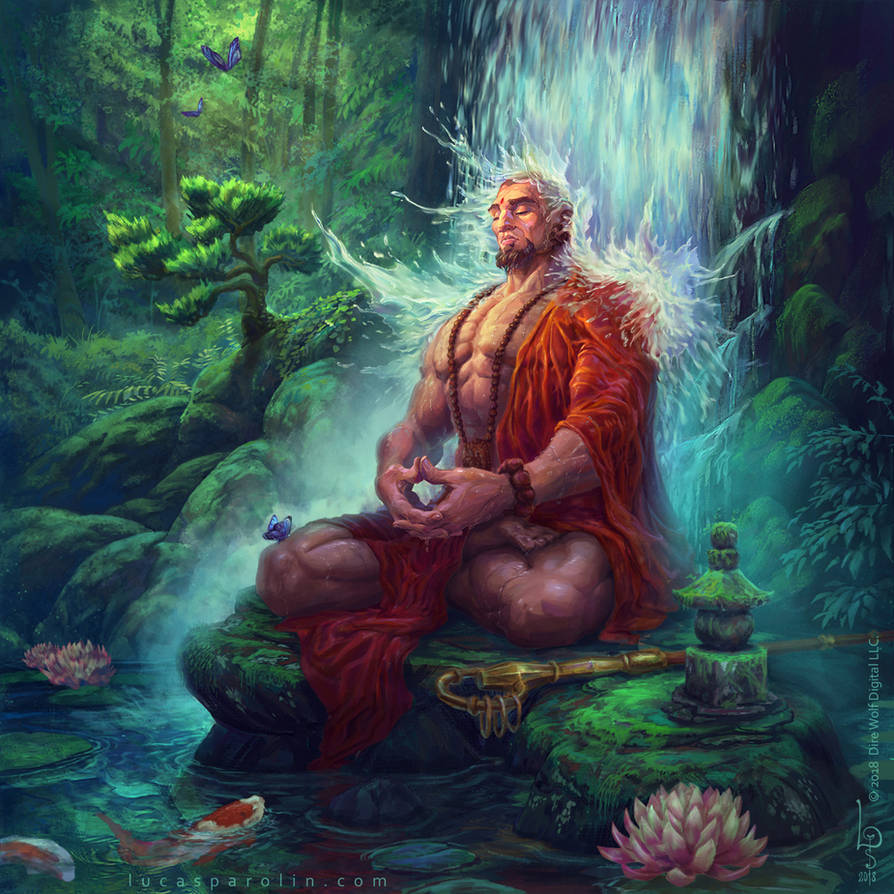
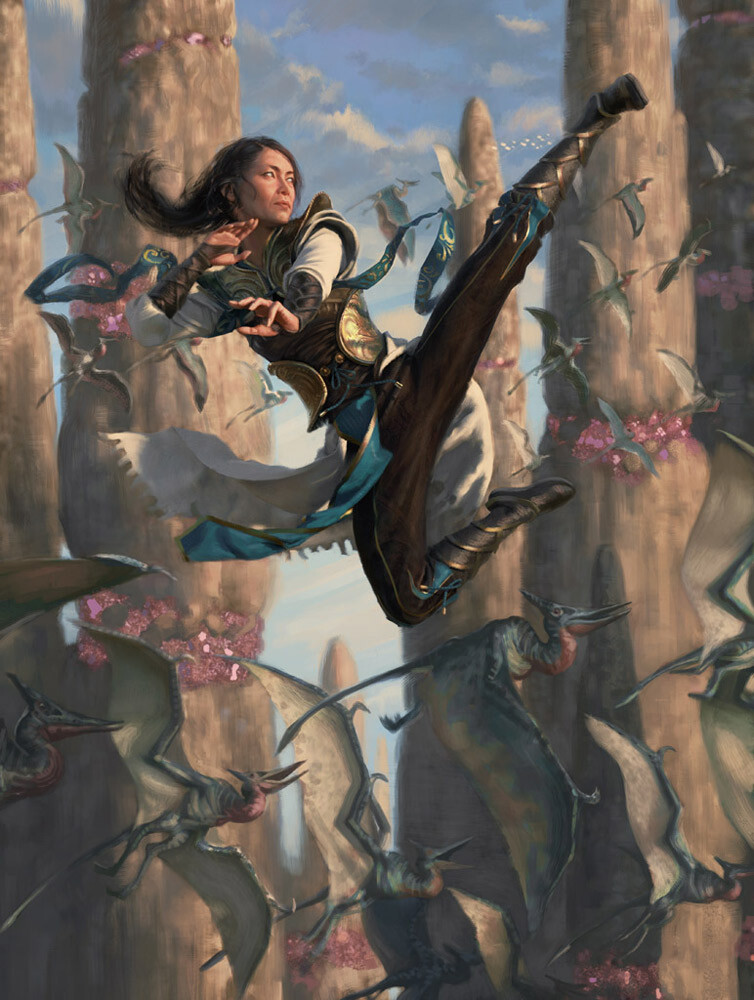

-
3Class Table
-
4Class Features
- 4Starting Stats and Equipment
- 4Monk Multiclassing, Unarmored Defense
- 5Martial Arts, Ki
- 6Unarmored Movement, Monastic Tradition
- 6Ability Score Improvement, Slow Fall, Extra Attack
- 6Debilitating Strike
- 7Ki-Empowered Strikes, Evasion, Stillness of Mind
- 7Standing Still, Purity of Body
- 8Agile Athletics, Diamond Soul
- 8Timeless Body, Empty Body, Perfect Self
-
9Monastic Traditions
Most monasteries practice one tradition exclusively, but a few honor the three traditions and instruct each monk according to his or her aptitude and interest. All traditions rely on the same basic techniques, diverging as the student grows more adept.
-
21Changelog
-
22Homebrew Adaptation
- 22Flying Fist
- 23Frozen Fist, Gravitation, Immortality, Inner Eye
- 24Kabuki, Moon, Rose, Sacred Inks
- 25Sphinx, Tattooed Temple, Thorns
- 26Unity, Void, Zhenren
-
27Credits
Other Changes
This variant is intended to go along with the other changes, like class proficiency bonuses, detailed here.
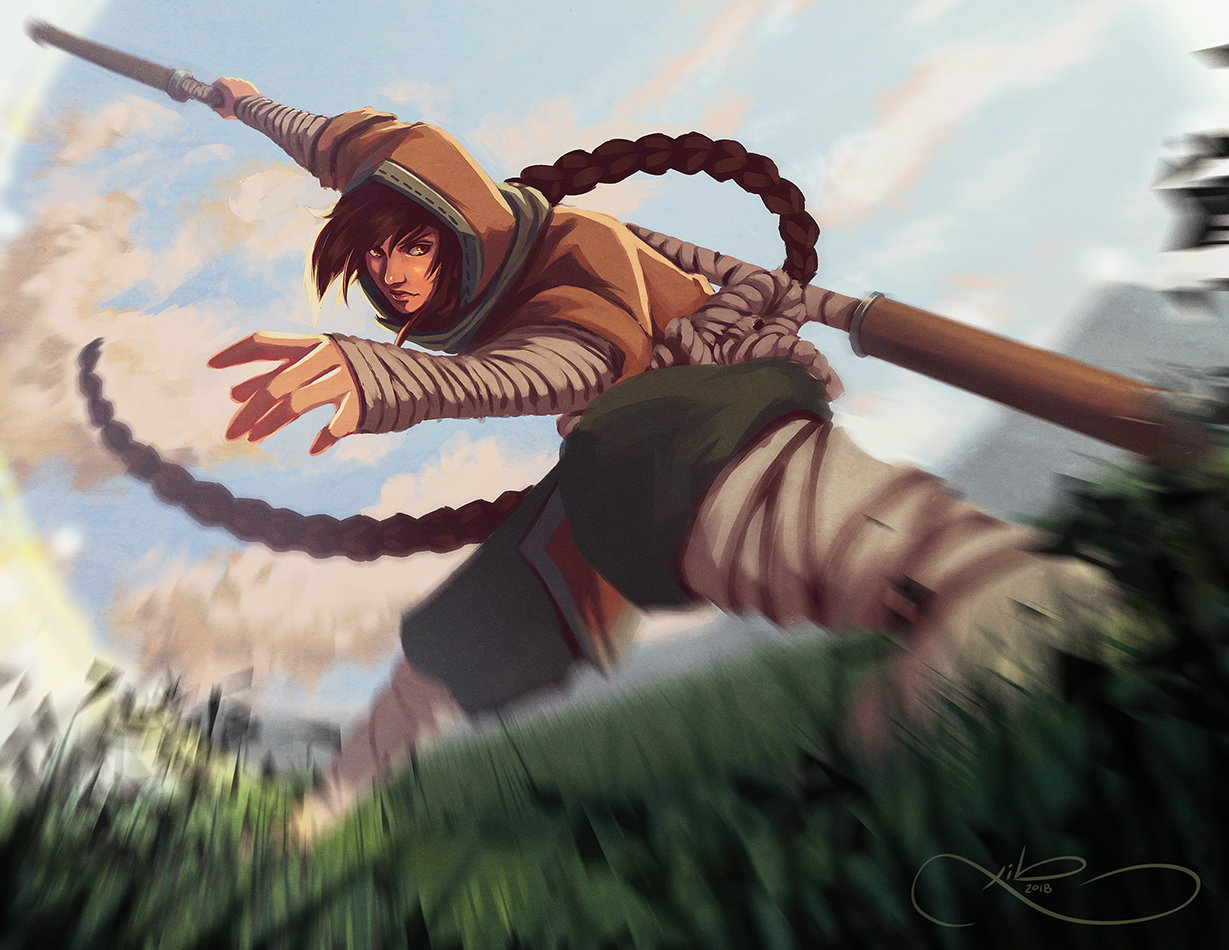

The Monk
Her fists a blur as they deflect an incoming hail of arrows, a half-elf springs over a barricade and throws herself into the massed ranks of hobgoblins on the other side. She whirls among them, knocking their blows aside and sending them reeling, until at last she stands alone.
Taking a deep breath, a human covered in tattoos settles into a battle stance. As the first charging orcs reach him, he exhales and a blast of fire roars from his mouth, engulfing his foes.
Moving with the silence of the night, a black-clad halfling steps into a shadow beneath an arch and emerges from another inky shadow on a balcony a stone’s throw away. She slides her blade free of its cloth-wrapped scabbard and peers through the open window at the tyrant prince, so vulnerable in the grip of sleep.
Whatever their discipline, monks are united in their ability to magically harness the energy that flows in their bodies. Whether channeled as a striking display of combat prowess or a subtler focus of defensive ability and speed, this energy infuses all that a monk does.
The Monk
| Level | Proficiency Bonus | Martial Arts | Unarmored Movement | Spirit Flow | Features |
|---|---|---|---|---|---|
| 1st | +2 | 1d4 | — | — | Unarmored Defense, Martial Arts |
| 2nd | +2 | 1d4 | +10 ft. | 1 | Ki, Unarmored Movement |
| 3rd | +2 | 1d4 | +10 ft. | 1 | Monastic Tradition, Deflect Missiles |
| 4th | +2 | 1d4 | +10 ft. | 1 | Ability Score Improvement, Slow Fall, Quickened Healing |
| 5th | +3 | 1d6 | +10 ft. | 2 | Extra Attack, Debilitating Strike, Ki improvement |
| 6th | +3 | 1d6 | +10 ft. | 2 | Ki-Empowered Strikes, Monastic Tradition Feature |
| 7th | +3 | 1d6 | +15 ft. | 2 | Evasion, Stillness of Mind |
| 8th | +3 | 1d6 | +15 ft. | 2 | Ability Score Improvement |
| 9th | +4 | 1d8 | +15 ft. | 3 | Standing Still, Unarmored Movement Improvement |
| 10th | +4 | 1d8 | +20 ft. | 3 | Purity of Body |
| 11th | +4 | 1d8 | +20 ft. | 3 | Monastic Tradition Feature, Flurry of Blows improvement |
| 12th | +4 | 1d8 | +20 ft. | 3 | Ability Score Improvement |
| 13th | +5 | 1d10 | +20 ft. | 4 | Agile Athletics |
| 14th | +5 | 1d10 | +25 ft. | 4 | Diamond Soul |
| 15th | +5 | 1d10 | +25 ft. | 4 | Timeless Body |
| 16th | +5 | 1d10 | +25 ft. | 4 | Ability Score Improvement |
| 17th | +6 | 1d12 | +25 ft. | 5 | Monastic Tradition Feature, Flurry of Blows improvement |
| 18th | +6 | 1d12 | +30 ft. | 5 | Empty Body |
| 19th | +6 | 1d12 | +30 ft. | 5 | Ability Score Improvement |
| 20th | +6 | 1d12 | +30 ft. | 5 | Perfect Self |
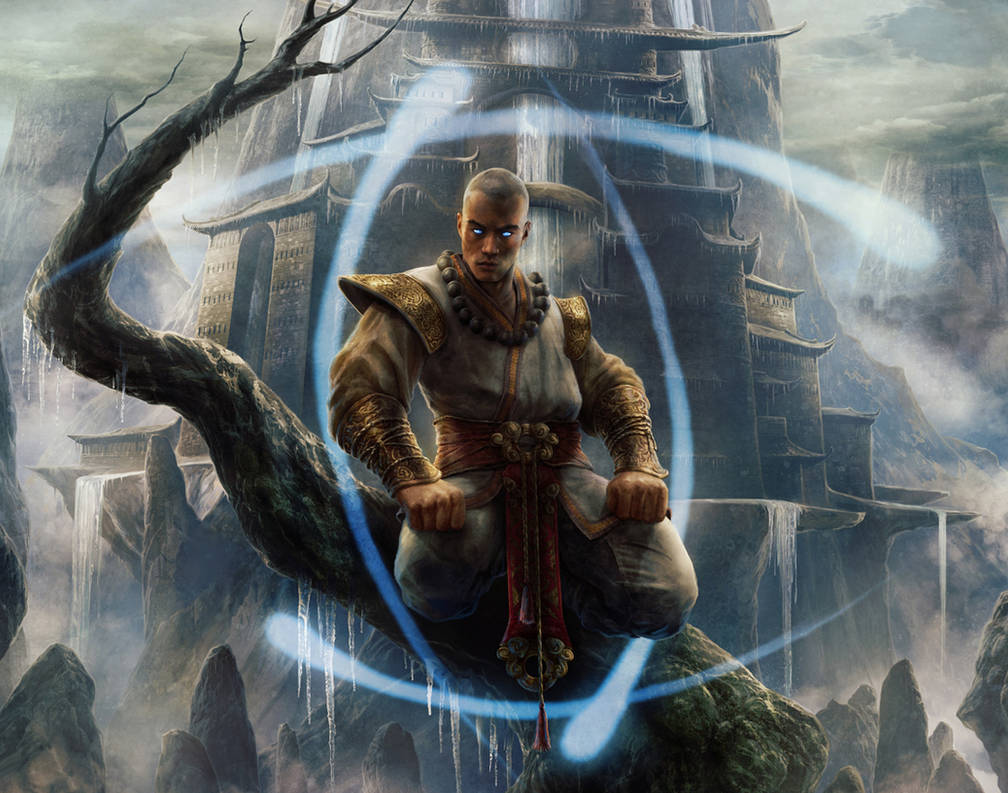

Creating a Monk
As you make your monk character, think about your connection to the monastery where you learned your skills and spent your formative years. Were you an orphan or a child left on the monastery's threshold? Did your parents promise you to the monastery in gratitude for a service performed by the monks? Did you enter this secluded life to hide from a crime you committed? Or did you choose the monastic life for yourself?
Consider why you left. Did the head of your monastery choose you for a particularly important mission beyond the cloister? Perhaps you were cast out because of some violation of the community's rules. Did you dread leaving, or were you happy to go? Is there something you hope to accomplish outside the monastery? Are you eager to return to your home?
As a result of the structured life of a monastic community and the discipline required to harness ki, monks are almost always lawful in alignment.
Quick Build
You can make a monk quickly by following these suggestions. First, make Dexterity your highest ability score, followed by Wisdom and then Constitution. Second, choose the hermit background.
Class Features
As a monk, you gain the following class features.
Hit Points
- Hit Dice: 1d8 per monk level
- Hit Points at 1st Level: 8 + your Constitution modifier
- Hit Points at Higher Levels: 1d8 (or 5) + your Constitution modifier per monk level after 1st
Proficiencies
- Armor: None
- Weapons: Simple weapons, shortswords, improvised weapons
- Tools: Choose one type of artisan’s tools or one musical instrument
- Saving Throws: Strength, Dexterity
- Skills: Choose two from Acrobatics, Athletics, History, Insight, Religion, and Stealth
Equipment
You start with the following equipment, in addition to the equipment granted by your background:
- (a) a shortsword or (b) any simple weapon
- (a) a dungeoneer's pack or (b) an explorer's pack
- (a) 10 darts
Alternatively, you can start with 1d4 x 10 gp and buy your starting equipment.
Monk Multiclassing
Monks follow all the normal rules for multiclassing. The following tables function as additions to the normal multiclassing rules.
Ability Score Minimum. As a multiclass character, you must have at least a Dexterity and Wisdom score of 13 to take a level in this class, or to take a level in another class if you are already a monk.
Proficiencies Gained. If monk isn’t your initial class, here are the proficiencies you gain when you take your first level as a monk: Simple weapons, shortswords
Spell Slots. If you are a Kabuki, add a third of your level in monk rounded down to the appropriate levels from other classes to determine your available spell slots.
Monk Proficiency Bonus. When multiclassed, any monk class feature that refers to your monk proficiency bonus refers to what your proficiency bonus would be if only taking your monk levels into account. If not multiclassed, this value will equal your regular proficiency bonus. Refer to the Monk Class Table in the Proficiency Bonus column for your monk level for what your monk proficiency bonus is.
Unarmored Defense
1st-level Monk feature
While you are wearing no armor and not wielding a shield, your AC equals 10 + your Dexterity modifier + your Wisdom modifier.
In addition, when another creature hits you with a melee attack while you are wielding a monk weapon, or no weapon at all, you can use your reaction to add your monk proficiency bonus to your AC for that attack, potentially causing the attack to miss you.
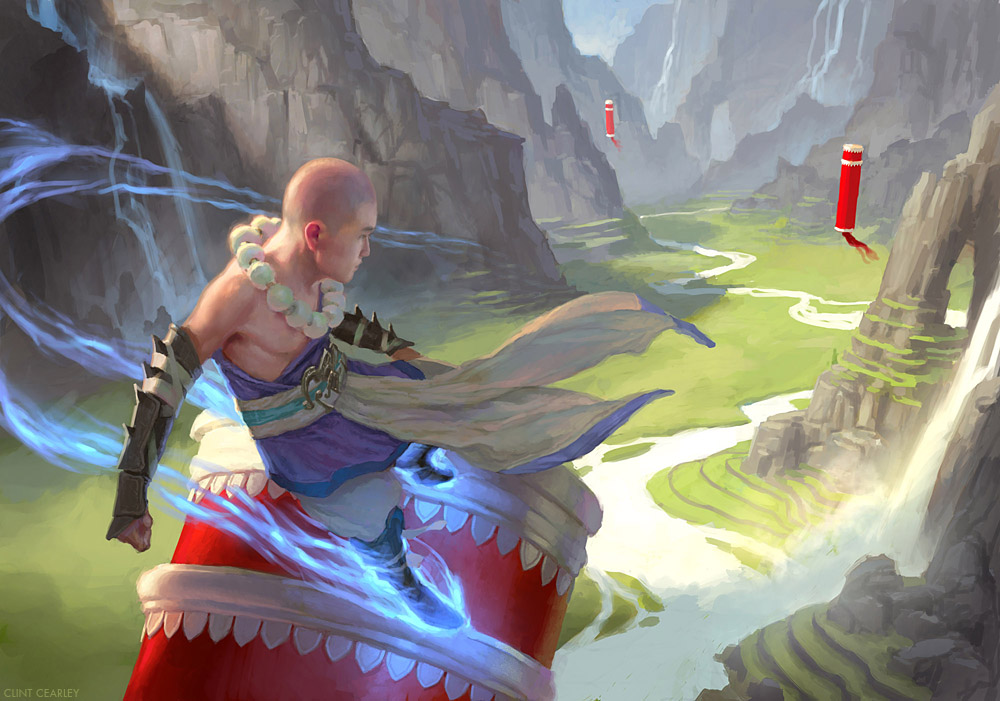

Martial Arts
1st-level Monk feature
Your practice of martial arts gives you mastery of combat styles that use unarmed strikes and monk weapons, which are shortswords, improvised weapons, and any simple melee weapons that don’t have the two-handed or heavy property.
You gain the following benefits while you are unarmed or wielding only monk weapons and you aren’t wearing armor or wielding a shield:
- You can use Dexterity instead of Strength for the attack and damage rolls of your unarmed strikes and monk weapons.
- You can roll a d4 in place of the normal damage of your unarmed strike or monk weapon. This die changes as you gain monk levels, as shown in the Martial Arts column of the Monk table.
- When you use the Attack action with an unarmed strike or a monk weapon on your turn, take the Dodge, Disengage, or Help action, spend 1 ki point or more as part of your action, or use a Monastic Tradition feature as an action on your turn, you can make one attack with an unarmed strike as part of the same action. For example, at level 1, if you take the Attack action and attack with a quarterstaff, you can also make an unarmed strike. You can make this attack in place of, but not in addition to, an additional attack made with two-weapon fighting.
Ki
2nd-level Monk feature
Your training allows you to harness the mystic energy of ki. Your access to this energy is represented by a number of ki points equal to your monk level. Starting at 5th level, your number of ki points increases by your Wisdom modifier (minimum 1).
You can spend these points to fuel various ki features. You know five such features, detailed below. You gain additional ways to use your ki at later levels and from your Monastic Tradition.
When you spend a ki point, it is normally unavailable until you finish a short or long rest, at the end of which you draw all of your expended ki back into yourself. You spent part of the rest meditating to regain your ki points.
Some of your ki features require your target to make a saving throw to resist the feature’s effects. The saving throw DC is calculated as follows:
Ki Save DC
Flurry of Blows
You can spend 1 ki point to make one unarmed strike as a bonus action. At 11th level, you can make two unarmed strikes, and at 17th level, you can make three unarmed strikes.
Patient Defense
You can spend 1 ki point when you take your action on your turn to impose disadvantage on all attack rolls against you until the beginning of your next turn.
Spirit Flow
As an action, you can spend ki points up to a limit set by the Spirit Flow column of the Monk table to invigorate the spirit of another creature you touch. That creature regains an expended spell slot or spell points equivalent to the ki points you spent. Alternatively, if a creature does not have spell slots, you may expend ki points equal to your ki point limit to allow it to regain 1 expended use of a feature that regains expended uses on both a short or long rest. Once a creature benefits from your Spirit Flow, it cannot benefit from your Spirit Flow again until the creature finishes a long rest.
Step of the Wind
You can spend 1 ki point when you move during your turn to move like the wind. Your speed is doubled until the end of your turn, your movement does not provoke attacks of opportunity, you have advantage on any Dexterity (Acrobatics) checks, and your jump distance is doubled for the turn.
Quickened Healing
You can use your action to spend 1 ki point and regain hit points equal to one roll of your Martial Arts die plus your Wisdom modifier.


Unarmored Movement
2nd-level Monk feature
Your speed increases by 10 feet while you are not wearing armor or wielding a shield. This bonus increases when you reach certain monk levels, as shown in the Monk table (15 ft at 6th level, 20 ft at 10th level, 25 ft at 14th level, and 30 feet at 18th level).
At 9th level, you gain the ability to move along vertical surfaces and across liquids on your turn without falling during the move.
Monastic Tradition
3rd-level Monk feature
You commit yourself to a monastic tradition, detailed at the end of the class description. Your tradition grants you features at 3rd level and again at 6th, 11th, and 17th level.
Deflect Missiles
3rd-level Monk feature
You can use your reaction to deflect or catch missiles when you are hit by a ranged weapon attack. When you do so, the damage you take from these attacks are reduced by 1d10 + your Dexterity modifier + your monk level. When you use your reaction this way, you may reduce the damage of any further ranged weapon attacks until the beginning of your next turn.
If you reduce the damage to 0, you can catch the missile if it is small enough for you to hold in one hand and you have at least one hand free. If you catch a missile in this way, you can make a ranged attack with the weapon or piece of ammunition you just caught as part of the same reaction. You you are considered proficient with the missile for this attack, regardless of your weapon proficiencies, and the missile counts as a monk weapon for the attack, which has a normal range of 20 feet and a long range of 60 feet. You may make only one such attack until the beginning of your next turn.
Ability Score Improvement
4th-level Monk feature
When you reach 4th level, and again at 8th, 12th, 16th, and 19th level, you can increase one ability score of your choice by 2, you can increase two ability scores of your choice by 1, or you can take a feat. As normal, you can’t increase an ability score above 20 using this feature.
Slow Fall
4th-level Monk feature
While you are conscious you reduce any falling damage you take by an amount equal to five times your monk level.
Extra Attack
5th-level Monk feature
You can attack twice, instead of once, whenever you take the Attack action on your turn.
Debilitating Strike
5th-level Monk feature
You can interfere with the flow of ki in an opponent’s body. When you hit another creature with an unarmed strike, you can spend 1 ki point to make a Debilitating Strike. The target may not take reactions until the end of your next turn. Additionally, you may choose to inflict one of the following two secondary effects on the target. Once a creature succeeds on a saving throw versus one of your Debilitating Strikes or has the effect ended on it, it is immune to that strike's secondary effect until you finish a long rest.
Stunning Strike
The target must succeed on a Constitution saving throw or gain the Stunned condition until the end of your next turn.
Slowing Strike
The target must succeed on a Wisdom saving throw or gain the Slowed condition until the end of your next turn.



Ki-Empowered Strikes
6th-level Monk feature
Your unarmed strikes count as magical for the purpose of overcoming resistance and immunity to nonmagical attacks and damage.
Evasion
7th-level Monk feature
Your instinctive agility lets you dodge out of the way of certain area effects, such as a blue dragon’s lightning breath or a fireball spell. When you are subjected to an effect that allows you to make a Dexterity saving throw to take only half damage, you instead take no damage if you succeed on the saving throw, and only half damage if you fail.
Stillness of Mind
7th-level Monk feature
You gain proficiency in Wisdom saving throws.
In addition, at the end of each of your turns, you can end one of the Charmed or Frightened conditions on yourself.
Standing Still
9th-level Monk feature
On the first round of a combat, you may take your turn to stand still, mentally preparing yourself for combat. When you do so, you must concentrate as if concentrating on a spell. You cannot take actions, move or speak until the beginning of your next turn. During this time, any creature who targets you with an attack or a harmful spell must first make a Wisdom saving throw against your ki save DC. On a failed save, the creature must choose a new target or lose the attack or spell. Standing Still doesn't protect you from area effects, such as the explosion of a fireball.
At the beginning of your next turn, the effect ends, you regain up to 2 + your Wisdom modifier in expended ki points and you may act normally. For the next minute, or until you lose concentration, you gain 1 special action you can take at your intitiative count minus 10, losing to ties. You may use this special action to move up to your speed and make one unarmed strike.
Furthermore, whenever a melee weapon attack against you misses while this effect persists, you may use your reaction to make an unarmed strike against the attacker. If this attack hits, in addition to dealing damage, the target must make a Dexterity saving throw. If the saving throw fails, you may disarm the held weapon that made the attack. You may choose to grab the weapon yourself, or have it land anywhere within 10 feet of the attacker.
Once you use Standing Still, you may not use it again until you complete a short or long rest.
Purity of Body
10th-level Monk feature
Your mastery of the ki flowing through you makes you immune to disease and poison, and you gain proficiency in Constitution saving throws.



Agile Athletics
13th-level Monk feature
You learn to use your speed and agility to fuel feats of strength. You may use your Dexterity modifier in place of your Strength modifier whenever a Strength ability check is called for. You can also use your Dexterity modifier to calculate your maximum jump distance instead of Strength.
Diamond Soul
14th-level Monk feature
Your mastery of ki grants you proficiency in all saving throws.
Additionally, whenever you make a saving throw and fail, you can expend 5 ki points to succeed instead.
Timeless Body
15th-level Monk feature
Your ki sustains you so that you suffer none of the frailty of old age, and you can’t be aged magically. You can still die of old age, however. In addition, you no longer need food or water. In addition, whenever you finish a short rest, your exhaustion level, if any, is decreased by 1.
Empty Body
18th-level Monk feature
You can use your bonus action to spend 6 ki points to become invisible for 1 minute. During that time, you also have resistance to all damage but force damage.
Additionally, you can spend 8 ki points to cast the astral projection spell, without needing material components. When you do so, you can’t take any other creatures with you.
Perfect Self
20th-level Monk feature
Your mystical powers manifest to their ultimate form, enhancing your physical attributes beyond what is achievable by others. Your Dexterity and Wisdom scores increase by 2, and your maximum for these scores is now 22.

Way of the Ascendant Dragon
Monks who follow the Way of the Ascendant Dragon revere the power and grandeur of dragons. They alter their own ki to resonate with draconic might, channeling it to augment their prowess in battle, soar through the air, and to bolster their allies.
As a follower of this Monastic Tradition, you decide how you unlocked the power of dragons through your ki. The Ascendant Dragon Origin table offers some possibilities.
| d6 | Origin |
|---|---|
| 1 | You honed your abilities by observing a dragon and aligning your ki with their world altering power. |
| 2 | A dragon personally took an active role in shaping your inner energy. |
| 3 | You studied at a monastery that traces its teachings back centuries or more to a single dragon’s instruction. |
| 4 | You spent long stretches meditating in the region of influence of an ancient dragon’s lair, absorbing its ambient magic. |
| 5 | You found a scroll written in Draconic that contained inspiring new techniques. |
| 6 | After a dream that featured a five-handed dragonborn you awoke with altered ki, reflecting the breaths of dragons. |
Dragonic Disciple
3rd-level Ascendant Dragon feature
You can channel your draconic ki to imbue your unarmed strikes with the essence of a dragon’s breath and to use your connection with draconic creatures to magnify your presence. You gain the following benefits:
- Draconic Strike. When you damage a target with an unarmed strike, you can change the damage type to acid, cold, fire, lightning, or poison.
- Tongue of Dragons. If you can’t already, you learn to speak, read, and write Draconic or one other language of your choice.
- Draconic Presence. If you fail a Charisma (Intimidation) or Charisma (Persuasion) check, you can use your reaction to reroll the check, as you tap into the mighty presence of dragons. Once this feature turns a failure into a success, you can’t use it again until you finish a long rest.
Breath of the Dragon
3rd-level Ascendant Dragon feature
You can channel your ki into destructive waves of energy like the dragons you emulate. When you take the Attack action on your turn, you can replace one of the attacks with an exhalation of draconic energy in either a 20-foot cone or a 30-foot line that is 5 feet wide (your choice). Choose a damage type: acid, cold, fire, lightning, or poison. Each creature in the area must make a Dexterity saving throw against your ki save DC, taking damage of the chosen type equal to two rolls of your Martial Arts die plus your Wisdom modifier on a failure, or half as much damage on a success.
At 11th level, the damage of your breath increases to three rolls of your Martial Arts die plus your Wisdom modifier.
You can use this feature a number of times equal to two times your Wisdom modifier, and you regain all expended uses when you finish a long rest.
While you have no uses available, you can spend 1 ki point to use this feature again.


Wings Unfurled
6th-level Ascendant Dragon feature
As a bonus action on your turn, you can unfurl spectral draconic wings from your back that last for 1 minute. While the wings exist, you have a flying speed equal to your walking speed.
Aspect of the Wyrm
11th-level Ascendant Dragon feature
The power of your draconic ki now radiates from you, protecting your allies from harm and punishing any who raise arms against them. As a bonus action, you can create an aura of draconic power that radiates 30 feet from you for 1 minute. You concentrate on this effect as if concentrating on a spell. Choose acid, cold, fire, lightning, or poison damage, and for the duration, you gain the following effects:
- Resistance. You and your allies within your aura gain resistance to the chosen damage type.
- Power Aura. Waves of destructive energy flow out from you and your allies when any of you are attacked. When you or one of your allies in the aura is hit by an attack made by another creature within the aura, the target that was hit can use their reaction to deal an amount of damage of the chosen type equal to two rolls of your Martial Arts die to the attacker.
- Frightful Presence. When you create this aura, and as a bonus action on subsequent turns, you can choose a creature in the aura. The target must succeed on a wisdom saving throw against your ki save DC or become frightened of you for 1 minute. The target can repeat the saving throw at the end of each of its turns, ending the effect on itself on a successful save.
Once you use this bonus action, you can’t use it again until you finish a long rest, unless you expend 3 ki points to use it again.
Ascendant Aspect
17th-level Ascendant Dragon feature
Your draconic ki reaches its peak. You gain the following benefits:
- Dragonsight. You gain blindsight out to 30 feet. Within that range, you can effectively see anything that isn’t behind total cover, even if you’re blinded or in darkness. Moreover, you can see an invisible creature within that range, unless the creature successfully hides from you.
- Augmented Breath. When you use your Breath of the Dragon, its shape and power increases. The exhalation of draconic energy becomes either a 60 foot cone or a 90 foot line that is 5 feet wide (your choice), and each creature in that area takes damage equal to 4 rolls of your Martial Arts die plus your Wisdom modifier on a failed save or half as much on a successful one.
- Explosive Fury. When you activate your Aspect of the Wyrm, draconic fury explodes from you. Choose any number of creatures you can see within your aura. Those creatures each take 4d10 acid, cold, fire, lightning, or poison damage (your choice).


Way of the Astral Self
A monk who follows the Way of the Astral Self believes their body is an illusion. They see their ki as a representation of their true form, an astral self. This astral self has the capacity to be a force of order or disorder, with some monasteries training students to use their power to protect the weak and other instructing aspirants in how to manifest their true selves in service to the mighty.
Arms of the Astral Self
3rd-level Astral Self feature
Your mastery of your ki allows you to summon a portion of your astral self. As a bonus action, you can expend 2 ki points to summon the arms of your astral self. When you do so, each creature of your choice that you can see within 10 feet of you must succeed on a Dexterity saving throw or take force damage equal to three rolls of your Martial Arts die.
For 10 minutes, these spectral arms hover near your shoulders or surround your arms (your choice). You determine the arms' appearance, and they vanish early if you are incapacitated or die.
While the spectral arms are present, you gain the following benefits:
- You can use your Wisdom modifier in place of your Strength modifier when making Strength checks and Strength saving throws.
- You can use the spectral arms to make unarmed strikes.
- When you make an unarmed strike with the arms on your turn, your reach for it is 5 feet greater than normal.
- The unarmed strikes you make with the arms can use your Wisdom modifier in place of your Strength or Dexterity modifier for the attack and damage rolls, and their damage type is force.
- You can use your bonus action to make one unarmed strike with your arms without expending ki points.
Visage of the Astral Self
6th-level Astral Self feature
When you summon your Arms of the Astral Self, you also summon the visage of your astral self. It vanishes early if you are incapacitated or die.
The spectral visage covers your face like a helmet or mask. You determine its appearance.
While the spectral visage is present, you gain the following benefits.
- Astral Sight. You can see normally in darkness, both magical and nonmagical, to a distance of 120 feet.
- Wisdom of the Spirit. You have advantage on Wisdom and Charisma checks, as well as on Wisdom and Charisma saving throws.
- Word of the Spirit. When you speak, you can direct your words to a creature of your choice that you can see within 60 feet of you, making it so only that creature can hear you. Alternatively, you can amplify your voice so that all creatures within 600 feet can hear you.
Body of the Astral Self
11th-level Astral Self feature
When you have both your astral arms and visage summoned, you can cause the body of your astral self to appear (no action required). This spectral body covers your physical form like a suit of armor, connecting with the arms and visage. You determine its appearance.
While the spectral body is present, you gain the following benefits.
- Deflect Energy. When you take acid, cold, fire, force, lightning, or thunder damage, you can use your reaction to deflect it. When you do so, the damage you take is reduced by 1d10 + your Wisdom modifier (minimum reduction of 1).
- Empowered Arms. Once per turn when you hit a target with the Arms of the Astral Self, you can deal extra damage to the target equal to your Martial Arts die.
Awakened Astral Self
17th-level Astral Self feature
Your connection to your astral self is complete, allowing you to unleash its full potential. As a bonus action, you can spend 5 ki points to summon the arms, visage, and body of your astral self together and awaken it for 1 hour. This awakening ends early if you are incapacitated or die.
While your astral self is awakened, you gain the following benefits.
- Armor of the Spirit. You gain a +2 bonus to Armor Class.
- Astral Barrage. Whenever you use the Attack action, you can instead attack one additional time than normal if all the attacks you make with your Attack action are made with your astral arms.


Way of the Drunken Master
The Way of the Drunken Master teaches its students to move with the jerky, unpredictable movements of a drunkard. A drunken master sways, tottering on unsteady feet, to present what seems like an incompetent combatant who proves frustrating to engage. The drunken master’s erratic stumbles conceal a carefully executed dance of blocks, parries, advances, attacks, and retreats.
A drunken master often enjoys playing the fool to bring gladness to the despondent or to demonstrate humility to the arrogant, but when battle is joined, the drunken master can be a maddening, masterful foe.
Bonus Proficiencies
3rd-level Drunken Master feature
You gain proficiency in the Performance skill if you don't already have it. Your martial arts technique mixes combat training with the precision of a dancer and the antics of a jester. You also gain proficiency with brewer's supplies if you don't already have it.
Drunken Technique
3rd-level Drunken Master feature
You learn how to twist and turn quickly as part of your Flurry of Blows. Whenever you use Flurry of Blows, you gain the benefit of the Disengage action, and your walking speed increases by 10 feet until the end of the current turn.
Additionally, your technique is unpredictable, and precise strikes can come from nowhere. You have advantage on the first attack you make with your unarmed strike through flurry of blows.
Spirit Intake
6th-level Drunken Master feature
You have learned how to harness the effect of being drunk to refresh your martial abilities. As a bonus action on your turn, you can take a swig of alcohol, as long as you have some in your posession, and regain half of your expended ki points, rounded down, in exchange for gaining disadvantage on Intelligence and Wisdom saving throws for 1 minute. Once you use this ability to regain ki points, you can't do so again until you finish a short or long rest.
Tipsy Sway
6th-level Drunken Master feature
You can move in sudden, swaying ways. You gain the following benefits.
Leap to Your Feet. When you're prone, you can stand up by spending 5 feet of movement, rather than half your speed.
Redirect Attack. When a creature misses you with a melee attack roll, you can use a reaction to cause that attack to hit one creature of your choice, other than the attacker, that you can see within 5 feet of you.
Drunkard's Luck
11th-level Drunken Master feature
You always seem to get a lucky bounce at the right moment. When you make an ability check, an attack roll, or a saving throw, you never have disadvantage on the roll.
Intoxicated Frenzy
17th-level Drunken Master feature
You gain the ability to make an overwhelming number of attacks against a group of enemies. When you use your Flurry of Blows, you can make two more attacks on top of the attacks Flurry of Blows would regularly provide, provided that each Flurry of Blows attack targets a different creature this turn.
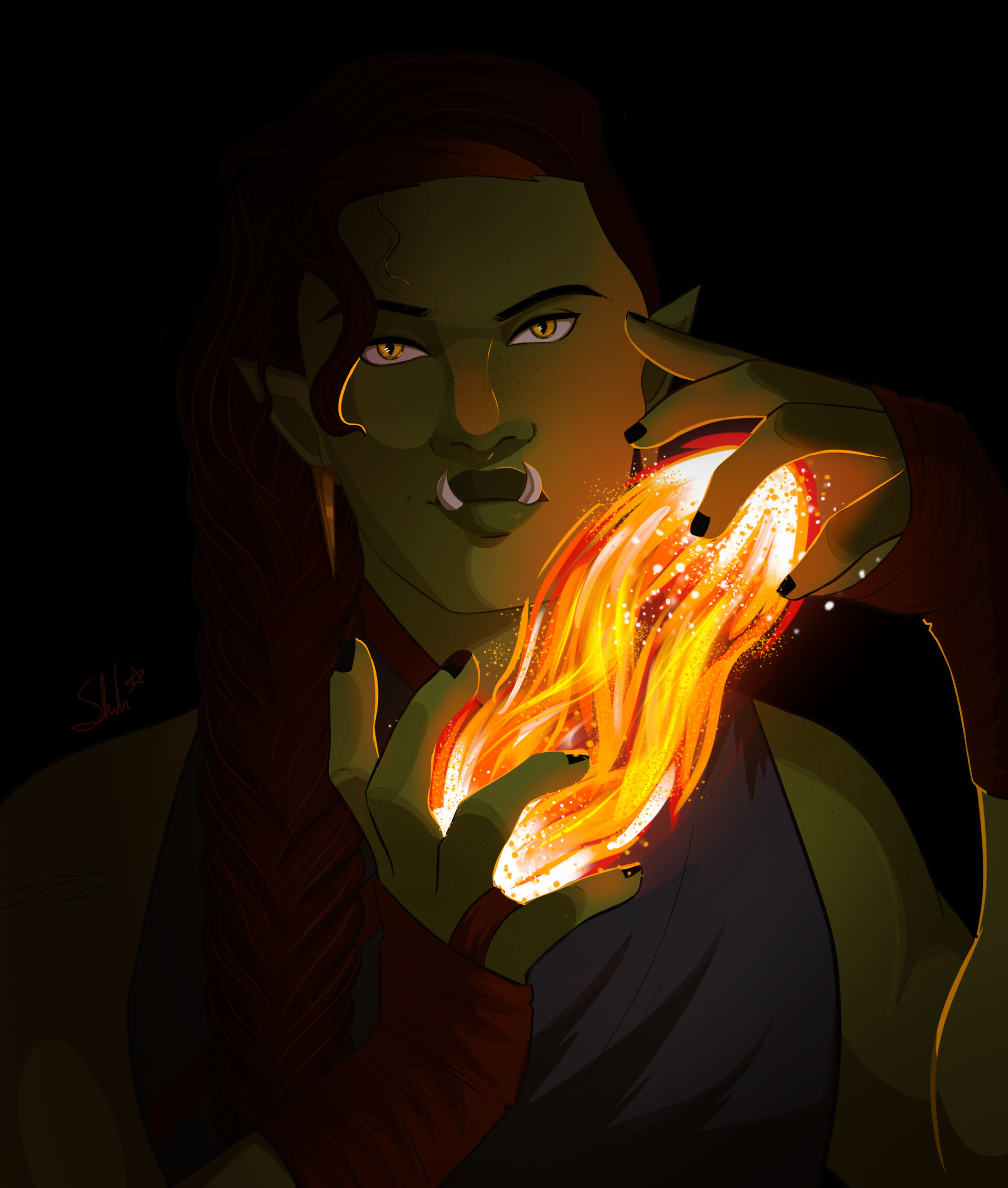

Way of the Four Elements
You follow a monastic tradition that teaches you to harness the elements. When you focus your ki, you can align yourself with the forces of creation and bend the four elements to your will, using them as an extension of your body. Some members of this tradition dedicate themselves to a single element, but others weave the elements together.
Many monks of this tradition tattoo their bodies with representations of their ki powers, commonly imagined as coiling dragons, but also as phoenixes, fish, plants, mountains, and cresting waves.
Disciple of the Elements
3rd-level Four Elements feature
You learn magical disciplines that harness the power of the four elements.
You know the Elemental Attunement discipline and one other elemental discipline of your choice, which are detailed in the “Elemental Disciplines” section below. You learn one additional elemental discipline of your choice at 6th, 11th, and 17th level.
Whenever you learn a new elemental discipline, you can also replace one elemental discipline that you already know with a different discipline.
Chi
You can access the elements through a source of elemental energy you find within yourself called chi. You have a number of chi points equal to your monk level, and you regain all expended chi points when you finish a short or long rest.
Casting Elemental Spells.
Some elemental disciplines allow you to cast spells. See chapter 10 for the general rules of spellcasting. To cast one of these spells, you use its casting time and other rules, but you don’t need to provide material components for it. If you cast a spell that provides an enhanced effect at a higher level, the spell level is increased to equal your monk proficiency bonus minus one.
When you use your action to cast a spell, or to control a spell you have already cast, you may use Martial Arts as if you had taken the Attack action.
Elemental Disciplines
The elemental disciplines are presented in alphabetical order for each level requirement. If a discipline requires a level, you must be that level in this class to learn the discipline.
Elemental Attunement. You can use your action to briefly control elemental forces within 30 feet of you, causing one of the following effects of your choice:
- Create a harmless, instantaneous sensory effect related to air, earth, fire, or water, such as a shower of sparks, a puff of wind, a spray of light mist, or a gentle rumbling of stone.
- Instantaneously light or snuff out a candle, a torch, or a small campfire.
- Chill or warm up to 1 pound of nonliving material for up to 1 hour.
- Cause earth, fire, water, or mist that can fit within a 1-foot cube to shape itself into a crude form you designate for 1 minute.
- By spending 1 chi point before making any attacks on your turn, you may add 1d6 damage any time you hit with a weapon attack until the beginning of your next turn. You choose the damage type added to damage rolls: fire, cold, thunder or lightning when you use this feature.
Fangs of the Fire Snake. When you use the Attack action on your turn, you can expend 1 chi point to cause tendrils of flame to stretch out from your fists and feet. Your reach with your unarmed strikes increases by 10 feet for the rest of your turn. A hit with such an attack deals fire damage instead of bludgeoning damage.
Until the beginning of your next turn, flames race across your body. You are immune to fire damage, and any creature that moves within 5 feet of you for the first time on a turn or begins its turn there takes 1d10 fire damage.
Fist of Four Thunders. You can expend 1 chi point to cast thunderwave.
Fist of Unbroken Air. You can create a blast of compressed air that strikes like a mighty fist. As an action, you can expend 1 chi point to choose a creature within 30 feet of you. That creature must make a Dexterity saving throw. On a failed save, the creature takes 3d10 bludgeoning damage, plus an extra 1d10 bludgeoning damage for each additional chi point you spend over 1, and you can push the creature up to 25 feet away from you and knock it prone. On a successful save, the creature takes half as much damage, and you don’t push it or knock it prone.


Rush of the Gale Spirits. You can expend 2 chi points to cast gust of wind. At 11th level, targets have disadvantage on their Strength saving throws against this spell effect.
Shape the Flowing River. As an action, you can expend 1 chi point and choose an area of ice or water no larger than 60 feet on a side within 120 feet of you. You can change water to ice within the area and vice versa, and you can reshape ice in the area in any manner you choose. You can raise or lower the ice’s elevation, create or fill in a trench, erect or flatten a wall, or form a pillar. The extent of any such changes can’t exceed half the area’s largest dimension. For example, if you affect a 60-foot square, you can create a pillar up to 30 feet high, raise or lower the square’s elevation by up to 30 feet, dig a trench up to 30 feet deep, and so on. You can’t shape the ice to trap or damage a creature in the area.
Sweeping Cinder Strike. You can expend 1 chi point to cast burning hands.
Striking Frost Blast. You can expend 1 chi point to cast frost fingers.
Water Whip. You can use your an action and expend 2 chi points to create a whip of water that shoves and pulls a creature to unbalance it. A creature that you can see that is within 30 feet of you must make a Dexterity saving throw. On a failed save, the creature takes 3d10 bludgeoning damage and you can either knock it prone or pull it up to 25 feet closer to you. On a successful save, the creature takes half as much damage, and you don’t pull it or knock it prone.
Clench of the North Wind. You can expend 2 chi points to cast hold person.
Gong of the Summit. You can expend 2 chi points to cast shatter.
Call the Fury of the Storm (6th Level Required). You can expend 3 chi points to cast call lightning.
Join the Earth (6th Level Required). You can expend 3 chi points to cast meld into stone. You may cast the spell as a ritual requiring no ki points.
Walk the Waves (6th Level Required). You may use an action to benefit from either water walk or water breathing. Switching effects requires one action.
Ride the Wind (6th Level Required). You can spend 3 chi points to cast fly, targeting yourself.
Stream of Flame (6th Level Required). You can expend 3 chi points to cast lightning bolt. This spell deals fire damage instead of lightning damage.
Call of the Deep (11th Level Required). You can expend 4 chi points to cast conjure elemental (water only).
Cold of the Glacier (11th Level Required). You can expend 4 chi points to cast snap freeze.
Flames of the Phoenix (11th Level Required). You can expend 4 chi points to cast wall of fire or fireball.
Grip of the Stone (11th Level Required). You can expend 4 chi points to cast hold monster.
Poison the Air (17th Level Required). You can expend 5 chi points to cast cloudkill.
Breath of Winter (17th Level Required). You can expend 6 chi points to cast Otiluke’s freezing sphere or cone of cold. You cannot use this ability again until you complete a long rest.
Everflowing Winds (17th Level Required). You can expend 6 chi points to cast wind walk. You cannot use this ability again until you complete a long rest.
The Searing Sun (17th Level Required). You can expend 6 chi points to cast sunbeam. You cannot use this ability again until you complete a long rest.
Wave of Rolling Earth (17th Level Required). You can expend 6 chi points to cast move earth or wall of stone. You cannot use this ability again until you complete a long rest.
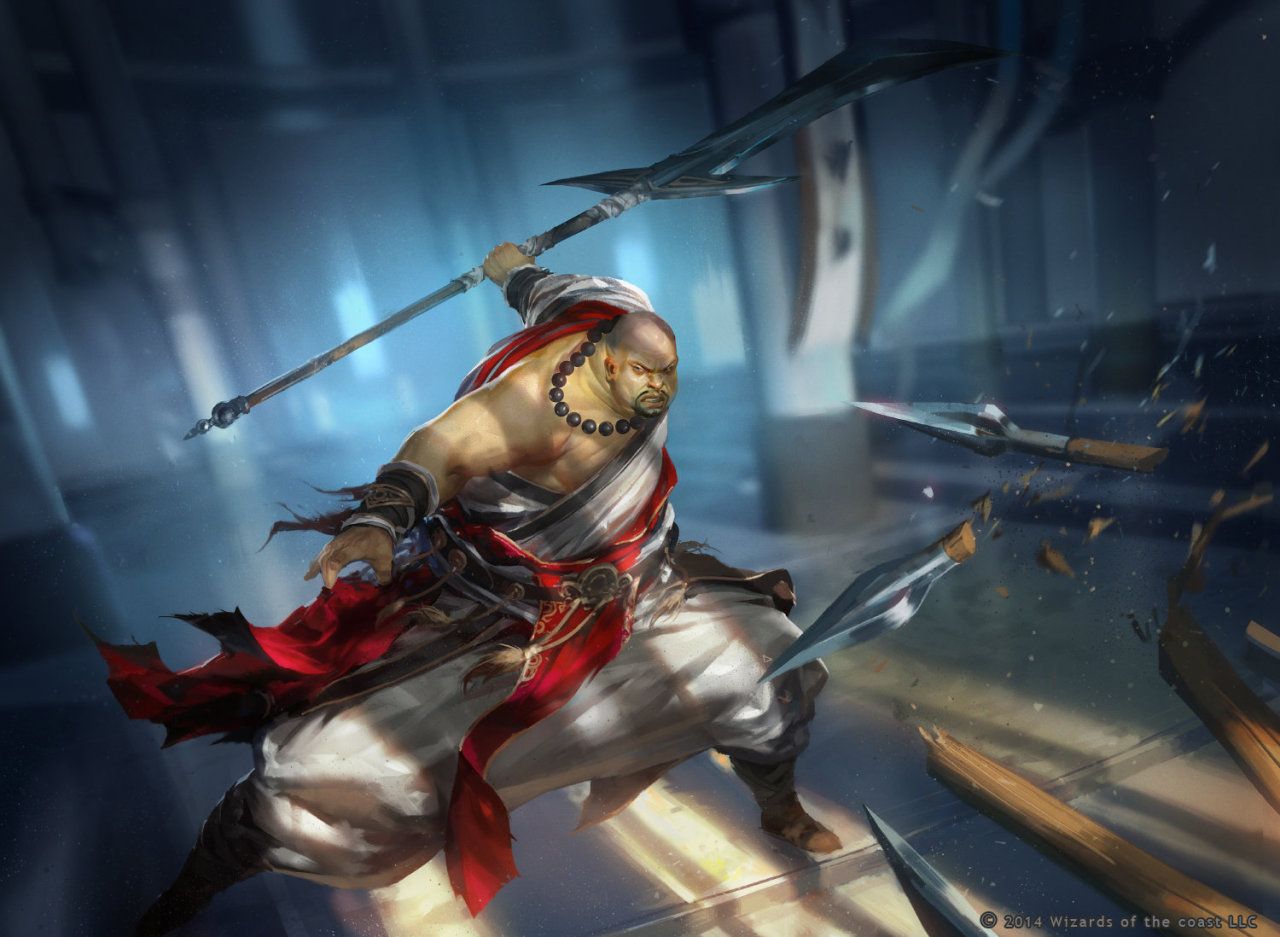

Way of the Kensei
Monks of the Way of Kensei train relentlessly with their weapons, to the point that the weapon becomes like an extension of the body. Founded on a mastery of sword fighting, the tradition has expanded to include many different weapons.
A kensei sees a weapon much in the same way a calligrapher or a painter regards a pen or brush. Whatever the weapon, the kensei views it as a tool used to express the beauty and precision of the martial arts. That such mastery makes a kensei a peerless warrior is but a side effect of intense devotion, practice, and study.
Path of the Kensei
3rd-level Kensei feature
Your special martial arts training leads you to master the use of certain weapons. This path also includes instruction in the deft strokes of calligraphy or painting. You gain the following benefits:
- Kensei Weapons. Choose two types of weapons to be your kensei weapons: one melee weapon and one ranged weapon. Each of these weapons can be any simple or martial weapon that lacks the special property. The longbow is also a valid choice. You gain proficiency with these weapons if you don't already have it. Weapons of the chosen types are monk weapons for you. Many of this tradition's features work only with your kensei weapons. When you reach 6th, 11th, and 17th level in this class, you can choose another type of weapon – either melee or ranged – to be a kensei weapon for you, following the criteria above.
- Agile Parry. If you make an unarmed strike as part of the Attack action on your turn and are holding a kensei weapon, you can use it to defend yourself if it is a melee weapon. You gain a +2 bonus to AC until the start of your next turn, while the weapon is in your hand and you aren’t incapacitated.
- Kensei's Shot. When you make a ranged weapon attack using a ranged Kensei weapon as part of the Attack action, you can make a ranged weapon attack with that same weapon using your bonus action on that turn.
- Way of the Brush. You gain proficiency with your choice of calligrapher's supplies or painter's supplies.
One with the Blade
6th-level Kensei feature
You extend your ki into your kensei weapons, granting you the following benefits.
- Magic Kensei Weapons. Your attacks with your kensei weapons count as magical for the purpose of overcoming resistance and immunity to nonmagical attacks and damage.
- Deft Strike. When you hit a target with a kensei weapon, you can roll two Martial Arts dice and increase the damage done by that amount. You can use this feature only once on each of your attacks, and you can use it twice, regaining all expended uses when you finish a short or long rest.
Sharpen the Blade
11th-level Kensei feature
You gain the ability to augment your weapons further with your ki. As a bonus action, you can expend up to 3 ki points to grant one kensei weapon you touch a bonus to attack and damage rolls when you attack with it. The bonus equals the number of ki points you spent. This feature's benefits stack with bonuses to attack and damage rolls from magic weapons, but cannot total more than a +3 bonus to attack and damage rolls. This bonus lasts for 10 minutes or until you use this feature again.
Unerring Accuracy
17th-level Kensei feature
Your mastery of weapons grants you extraordinary accuracy. If you miss with an attack roll using a monk weapon on your turn, you can reroll it. You can use this feature only once on each of your turns.
In addition, on attacks that use monk weapons, you land a critical hit on rolls of 19 or 20.


Way of the Long Death
Monks of the Way of the Long Death are obsessed with the meaning and mechanics of dying. They capture creatures and prepare elaborate experiments to capture, record, and understand the moments of their demise. They then use this knowledge to guide their understanding of martial arts, yielding a deadly fighting style.
Touch of Death
3rd-level Long Death feature
Your study of death allows you to extract vitality from another creature as it nears its demise. When you reduce a hostile creature within 5 feet of you to 0 hit points, you gain temporary hit points equal to your Wisdom modifier + your monk level (minimum of 1 temporary hit point).
Additionally, when a creature hits you and you had at least one temporary hit point granted by this feature, you can use your reaction to make an unarmed attack infused with necrotic energy. On a hit, the unarmed strike deals its normal damage and deals additional necrotic damage equal to two rolls of your martial arts die.
Hour of Reaping
6th-level Long Death feature
You gain the ability to unsettle or terrify those around you as an action, for your soul has been touched by the shadow of death. When you take this action, each creature up to a radius of 30 feet around you that can see you must succeed on a Wisdom saving throw or be frightened of you until the end of your next turn.
Mastery of Death
11th-level Long Death feature
You use your familiarity with death to escape its grasp. When you are reduced to 0 hit points, you can expend 1 ki point (no action required) to have 1 hit point instead.
Touch of the Long Death
17th-level Long Death feature
Your touch can channel the energy of death into a creature. Once per turn, when you hit a creature with an unarmed attack, you can force the creature to make a Constitution saving throw. On a failure, the target takes 10 necrotic damage. You can enhance this damage by expending ki points, adding 2d8 necrotic damage per ki point spent on a failed save. A creature takes half as much necrotic damage on a successful save.


Way of Mercy
Monks of the Way of Mercy learn to manipulate the life force of others to bring aid to those in need. They are wandering physicians to the poor and hurt. However, to those beyond their help, they bring a swift end as an act of mercy.
Those who follow the Way of Mercy might be members of a religious order, administering to the needy and making grim choices rooted in reality rather than idealism. Some might be gentle-voiced healers, beloved by their communities, while others might be masked bringers of macabre mercies.
The walkers of this way usually don robes with deep cowls, and they often conceal their faces with masks, presenting themselves as the faceless bringers of life and death.
Implements of Mercy
3rd-level Mercy feature
You gain proficiency in the Insight and Medicine skills, and you gain proficiency with the herbalism kit.
You also gain a special mask, which you often wear when using the features of this subclass. You determine its appearance, or generate it randomly by rolling on the Merciful Mask table.
| d6 | Mask Appearance |
|---|---|
| 1 | Raven |
| 2 | Blank and White |
| 3 | Crying Visage |
| 4 | Laughing Visage |
| 5 | Skull |
| 6 | Butterfly |
Hands of Healing
3rd-level Mercy feature
Your mystical touch can mend wounds. As an action, you can touch a creature and restore a number of hit points equal to a roll of your Martial Arts die + your Wisdom modifier. Once you use this ability, you can't do so again until you finish a short or long rest, unless you expend 1 ki point to do so again.
When you use your Flurry of Blows, you can replace one of the unarmed strikes with a use of this feature without spending a use of this feature or ki point for the healing.
Hands of Harm
3rd-level Mercy feature
You use your ki to inflict wounds. When you hit a creature with an unarmed strike, you can spend 1 ki point to deal extra necrotic damage equal to one roll of your Martial Arts die. You can use this feature only once per turn.
Physician's Touch
6th-level Mercy feature
You can administer even greater cures with a touch, and if you feel it's necessary, you can use your knowledge to cause harm.
When you use Hands of Healing on a creature, you can also end one disease or one of the following conditions affecting the creature: blinded, deafened, paralyzed, poisoned, or stunned.
When you use Hands of Harm on a creature, you can subject that creature to the poisoned condition until the end of your next turn.
Flurry of Healing and Harm
11th-level Mercy feature
You can now mete out a flurry of comfort and hurt. When you use Flurry of Blows, you can now replace each of the unarmed strikes with a use of your Hands of Healing, without spending ki points for the healing.
In addition, when you make an unarmed strike with Flurry of Blows, you can use Hand of Harm with that strike without spending the ki point for Hands of Harm. You can still use Hands of Harm only once per turn.
Hand of Ultimate Mercy
17th-level Mercy feature
Your mastery of life energy opens the door to the ultimate mercy. As an action, you can touch the corpse of a creature that died within the past minute and expend 5 ki points. The creature then returns to life, regaining a number of hit points equal to 4d10 + your Wisdom modifier. If the creature died while subject to any of the following conditions, it revives with them removed: blinded, deafened, paralyzed, poisoned, and stunned.
Once you use this feature, you can't use it again until you finish a long rest.

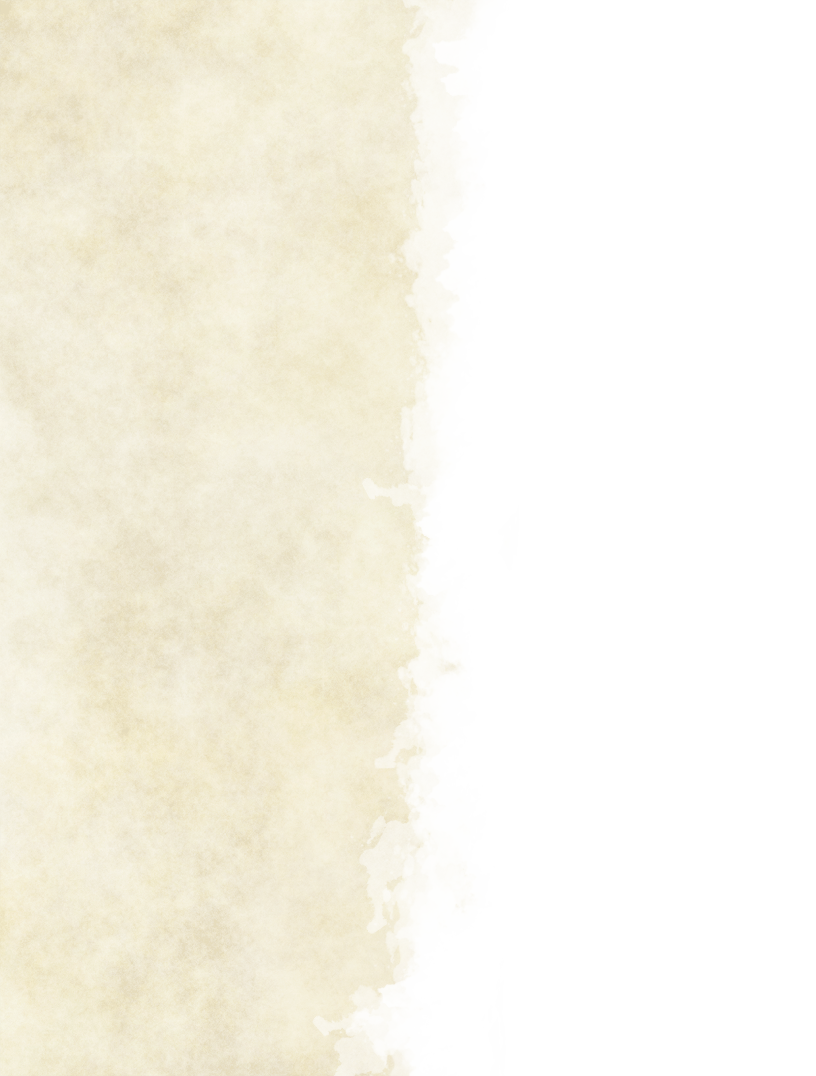
Way of the Open Hand
Monks of the Way of the Open Hand are the ultimate masters of martial arts combat, whether armed or unarmed. They learn techniques to push and trip their opponents, manipulate ki to heal damage to their bodies, and practice advanced meditation that can protect them from harm.
Open Hand Technique
3rd-level Open Hand feature
You can manipulate your enemy’s ki when you harness your own. Whenever you hit a creature with one of the attacks granted by your Flurry of Blows, you can impose one of the following effects on that target:
- It must succeed on a Dexterity saving throw or be knocked Prone.
- It must make a Strength saving throw. If it fails, you can push it up to 15 feet away from you.
- It can’t take Reactions until the end of your next turn.
Wholeness of Body
6th-level Open Hand feature
You gain the ability to heal yourself. As a Magic Action, you can regain all lost hitpoints up to your hit point maximum. Once you do so, you can't do so again until you finish a Long Rest.
Tranquility
11th-level Open Hand feature
You can enter a special meditation that surrounds you
with an aura of peace. At the end of a Long Rest, you gain
the effect of the Sanctuary spell that lasts until the start of your next long rest (the spell can end early as normal). The saving throw DC for the spell equals your ki save DC. While the Sanctuary spell is in effect, you may end the effect in the first round of combat as a free action to gain the benefits of the Standing Still ability without foregoing your Action on your first turn if that ability is available for use. When you do so, you gain access to the special action granted by Standing Still, but not the reaction attack. The benefit you gain fades if you lose Concentration.
Quivering Palm
17th-level Open Hand feature
You gain the ability to set up lethal vibrations in someone’s body. When you hit a creature with an Unarmed Strike, you can spend 4 Ki Points to start these imperceptible vibrations, which last for a number of days equal to your Monk level. The vibrations are harmless unless you use your action to end them. Alternatively, when you take the Attack action on your turn, you can replace one of the attacks with this action. To use this Action, you and the target must be on the same plane of existence. When you use this Action, the target must make a Constitution saving throw, taking 10d12 Force damage on a failed save or half as much damage on a successful one.
You can have only one creature under the effect of this feature at a time. You can end the vibrations harmlessly without using an Action.


Way of Shadow
Monks of the Way of Shadow follow a tradition that values stealth and subterfuge. These monks might be called ninjas or shadowdancers, and they serve as spies and assassins. Sometimes the members of a ninja monastery are family members, forming a clan sworn to secrecy about their arts and missions. Other monasteries are more like thieves’ guilds, hiring out their services to nobles, rich merchants, or anyone else who can pay their fees. Regardless of their methods, the heads of these monasteries expect the unquestioning obedience of their students.
Shadow Arts
3rd-level Shadow feature
You can see in dim light within 60 feet of you as if it were bright light, and in darkness within 60 feet of you as if it were dim light. If you already had darkvision through your race, it's range increases by 30 feet.
Additionally, your training in the Way of Shadow allows you to duplicate the effects of certain spells. As an action, you can cast darkness, darkvision, pass without trace, or silence, without providing material components. You can cast each of these spells once, regaining all expended uses when you finish a long rest, unless you expend 2 ki points to cast one of these spells again.
When you cast the darkness spell, you can see through the darkness created by the spell. When you cast the darkvision spell on a creature, you also grant it the ability to see through any magical darkness you create.
Additionally, you gain the minor illusion cantrip if you don’t already know it.
Shadow Step
6th-level Shadow feature
You gain the ability to step from one shadow into another. When you are in dim light or darkness, as a bonus action you can teleport up to 60 feet to an unoccupied space you can see that is also in dim light or darkness. You then gain advantage on the first melee attack you make before the end of the turn.
Cloak of Shadows
11th-level Shadow feature
You have learned to become one with the shadows. When you are in an area of dim light or darkness, you can use your action to become invisible. You remain invisible until you make an attack, cast a spell, or are in an area of bright light.
Grand Master of Shadows
17th-level Shadow feature
You learn to use advanced Shadow Art Techniques only available to grand masters. As an action on your turn, you can cast the greater invisibility or shadow of moil spells at 4th level, targeting only yourself, and without requiring the material components. You can cast both spells once, regaining expended uses when you finish a long rest, unless you expend 4 ki points to cast either spell again.
Additionally, you can cast the mislead spell as a reaction to getting hit with an attack, and when you do so, the attack misses and you can also teleport up to 30 feet to an unoccupied space you can see. Once you cast mislead in this way, you can't do so again until you finish a long rest, unless you expend 5 ki points to do so again.


Way of the Sun Soul
Monks of the Way of the Sun Soul learn to channel their own life energy into searing bolts of light. They teach that meditation can unlock the ability to unleash the indomitable light shed by the soul of every living creature.
Luminous Body
3rd-level Sun Soul feature
As an action, you can cause yourself to emit bright light to a radius of 10 feet and dim light for an additional 10 feet. You can turn off this ability as a bonus action.
Radiant Sun Bolt
3rd-level Sun Soul feature
You can hurl searing bolts of magical radiance. You gain a new attack option that you can use with any attacks made as part of the Attack action. This special attack is a ranged spell attack with a normal range of 30 feet and a long range of 90 feet. You are proficient with it, and you add your Dexterity modifier to its attack and damage rolls. On a hit, it deals radiant damage equal to your martial arts die.
In addition, you can spend 1 ki point and use a bonus action to make the special attack a number of times equal to your flurry of blows.
Searing Arc Strike
6th-level Sun Soul feature
You gain the ability to channel your ki into searing waves of energy. Immediately after you take the Attack action on your turn, you can cast the burning hands spell as a bonus action with no verbal components. When you use this feature, the spell is cast at a level equal to your monk proficiency bonus minus one.
You can use this feature a number of times equal to your Wisdom modifier, and you regain 1 expended use when you finish a short rest, and all expended uses when you finish a long rest.
Searing Sunburst
11th-level Sun Soul feature
You gain the ability to create an orb of light that erupts into a devastating explosion. As an action, you magically create an orb and hurl it at a point you choose within 150 feet, where it erupts into a sphere of radiant light for a brief but deadly instant.
Each creature in that 20-foot-radius sphere must make a Constitution saving throw versus your ki save DC. Any creatures that are vulnerable to radiant damage or have the sunlight sensitivity trait have disadvantage on the saving throw. The sphere deals 4d6 radiant damage, or half as much on a successful save. Any creature that fails the saving throw is also blinded for 1 minute. A creature doesn't need to make the save if the creature is behind opaque, half, or greater cover, if the creature is blind, or if the creature is immune to radiant damage. A creature blinded by this ability makes an additional Constitution saving throw at the end of each of its turns, ending the effect on a success.
Once you use this ability, you can't do so again until you finish a long rest, unless you use 4 ki points to use it again.
Solar Flare
17th-level Sun Soul feature
You can channel the power of stars through you. As an action, you can cast flame strike using Wisdom as your spellcasting ability. Once you cast the spell using this ability, you can't do so again until you finish a short or long rest, unless you expend 4 ki points to do so again.
Immediately after you cast flame strike using this ability, you become wreathed in a luminous, magical aura until the end of your next turn. You shed bright light in a 30-foot radius and dim light for an additional 30 feet. You can extinguish or restore the light as a bonus action.
If a creature hits you with a melee attack while this light shines, they take radiant damage equal to 5 + your Wisdom modifier.
Base Monk Changelog
Here are the notable changes to the base monk.
- Unarmored Defense now includes a reaction you can use to add your monk proficiency bonus to your AC for that attack, helping the monk out with it's need to strike in melee while having a d8 hit die.
- Martial Arts die progression has been sped up to end at a d12 instead of d10.
- The free unarmed strike you get from martial arts can be made as part of your action, as long as you do something monk-ish with your action, freeing up your bonus action.
- Ki points are increased by your Wisdom modifier at 5th level.
- Flurry of Blows changes to 1 unarmed strike, then increasing to 2 and then 3 at 11th and 17th levels respectively. Also, you can use it even if you didn't take the Attack action.
- Patient Defense and Step of the Wind can be done as part of your action, and don't require your bonus action.
- Spirit Flow has been added as a ki feature, allowing the monk to serve as a battery for spellcasters or short-rest recovered abilities. It's also thematic with the idea of monks being able to share their ki energy to rejuvenate their allies, giving them abilities that synergize with other party members.
- Dedicated Weapon removed.
- Deflect Missiles now reduces the damage of any ranged attacks coming your way, not just one.
- Added Slowing Strike as an alternative to Stunning Strike.
- Both Stunning and Slowing strike, even if the creatures succeed their saving throw, still disallow the creature from taking reactions. That way there's an assured benefit to using them and it's not just a feel-bad waste of your ki 50% of the time.
- Monks now gain proficiency in Wisdom and Constitution saving throws at 7th and 10th level, allowing them to actually be good at saving throws at earlier levels, while slowly building up in saving throw efficacy.
- Stillness of Mind altered so it actually works even if a charmed or frightened effect causes you to lose your action. You can still end the effect, but you can't take your action during your turn. This feature also now also grants proficiency in Wisdom saving throws.
- Standing Still is added as an ability for the monk that allows them to give up the first turn of combat to focus, and allows them to flow through combat even more by gaining a legendary action and other benefits, but requires concentration. Spellcasters are getting 5th-level spells, it's time for martials to get cool abilities.
- Purity of Body now gives proficiency in Constitution saving throws.
- Diamond soul now also gives you the capacity to use your ki points to succeed on a saving throw you do happen to fail. Now monks are incredible at saving throws.
- Timeless Body allows you to lose a level of exhaustion on a short rest.
- Empty Body is now a bonus action and has increased in cost.
- Perfect Self buffed to actually be a good capstone, allowing your Dexterity and Wisdom scores to both increase by 2 to a maximum of 22.
Published Subclass Changes
In general, I've changed subclasses that require you to use ki to use their features to have in-built uses for their features, so that using their features doesn't take away from you being a good base monk.
Ascendant Dragon
- Breath of the Dragon buffed to add your Wisdom modifier to the damage, and the uses of this feature are tied to Wisdom modifier instead of proficiency bonus, and you can use 1 instead of 2 ki points to use it again once you've run out of free uses.
- Wings unfurled now straight-up allows you to, as bonus action, grant yourself a flying speed for 1 minute.
- Aspect of the Wyrm gains Power Aura.
- Ascendant Aspect: Blindsight increased to 30 feet, augment breath now no longer costs ki, and Explosive Fury now just does the damage, and does more damage, no saving throw.
Astral Self
- Arms of the Astral Self changed to allow you to make 1 bonus action unarmed strike. You get an essentially free flurry of blows if you provide the initial investment.
- Visage of the Astral Self doesn't cost any additional ki. Wisdom of the Spirit expanded in its use cases.
- Awakened Astral Self now costs 3 to summon everything.
Drunken Master
- Advantage on the first attack made as part of flurry of blows, fits with the theme of unpredictable strikes.
- Spirit Intake added.
- Redirect Attack now no longer costs ki points.
- Drunkard's Luck now is free and is always on.
Four Elements
- Chi Points added, so you don't need to expend your limited ki points to use your subclass features.
- A lot of things moved around for disciplines, spells changed.
Kensei
- Kensei's Shot allows you to make a ranged attack as part of your bonus action.
- Deft Strike changed to be a 2/SR feature, no ki cost.
- Allows you to apply it to multiple attacks on your turn as long as you're willing to spend the ki.
- Change it to apply a maximum of +3.
Long Death
- Touch of Death now only applies to hostile creatures. Added a way to get a reaction attack while you have these temp hit points.
- Hour of Reaping now allows you to change the radius to be up to 30 feet, allowing you some flexibility to exclude allies, without applying a limiter.
Mercy
- Hands of Harm nerfed to be just one roll of your martial arts die. Damage with Wisdom modifier with more ki and more flurry attacks got pretty large.
Open Hand
- Wholeness of Body now just heals you for all your hit points once per long rest. Easy, simple, not broken.
- Tranquility now synergizes nicely with Standing Still.
Shadow
- Shadow Arts now provides one free use of each spell. You can also see through the darkness created by the your darkness, and can grant others the ability to see through it as well with your darkvision.
- Opportunist replaced with Grand Master of Shadows, allowing you to cast some appropriate additional 4th-level spells instead of a generic reaction attack. You also get the unique ability to make a shadow clone with the mislead spell.
Sun Soul
- Luminous Soul allows you to give off light passively.
- Radiant Bolt now uses Dexterity for its attack and damage rolls.
- Searing Arc Strike grants you free uses, and the level at which you cast the spell increases without additional ki expenditure.
- Searing Sunburst now can apply blinded and it's damage is increased.
- Sun Shield replaced and incorporated into a new ability called Solar Flare, where you can cast flame strike.
Homebrew Adaptation
In general, this monk variant focuses on allowing monk subclasses to use their features a couple times without expending their valuable ki points. In addition, features should scale as you gain levels. Here are a collection of popular homebrew monk subclasses and some suggestions for adapting them to this variant.
Flying Fist
Benevolent Evil's Flying Fist found here.
Leaping Strike
Replace the last two paragraphs with:
"When you use the Step of the Wind feature and jump or fly at least 10 feet toward a target, you can change the first attack you make against it at the end of the movement into a leaping strike. On a hit, the attack deals bonus damage equal to two rolls of your Martial Arts dice.
When you hit with this Leaping Strike, you can choose to force the target to make a Strength saving throw, falling prone on a failure. You only can use this feature with a monk weapon or an unarmed strike, and you can only do so once per turn. You can amplify your Leaping Strike with this feature a number of times equal to your Wisdom modifier, and you regain all expended uses when you finish a long rest, unless you expend 1 ki point to do so again."
Interception
Replae the feature description with:
"You can intercept a foe when they move. When a creature moves within 15 feet of you, you can use your reaction to jump (or fly if you have a flying speed) up to 15 feet to an unoccupied space within 5 feet of them. If you do, you make an unarmed attack against the creature immediately at the end of the movement. If you hit, the creature's speed becomes 0 for the rest of the turn.
You can use this feature a number of times equal to your Wisdom modifier, and you regain all expended uses when you finish a long rest, unless you expend 1 ki point do use it again."
Empty and Become Wind
Remove "+ twice your Dexterity modifier" from the end of the feature's description.
Frozen Fist
xpertranger's Way of the Frozen Fist found here.
Ice Bracers
Add "and to 3d8 at 17th level" to the end of the first paragraph.
Flurry Strikes
Replace the first sentence with "When you hit a creature with two or more of your unarmed attacks on your turn, it must make a Constitution saving throw against your ki save DC."
Deep Freeze
Replace the feature with the following:
You can stomp the ground causing the area in front of you to become slick with freezing ice. As an action you can cause each creature on the ground in a 25 foot cube originating from you to make a Dexterity saving throw or take a number of d6s of cold damage equal to one third your monk level and be knocked prone. Additionally, the area becomes difficult terrain to all creatures except you until the start of your next turn. When you use this action, you also gain temporary hit points equal to half your monk level.
Ice Gauntlets
Replace the feature with the following:
When you use your Ice Bracers feature they instead take the form of Ice Gauntlets. The gauntlets function the same as the bracers with the following added benefits:
- At the start of each of your turns, if you have more than 0 hit points you may choose to gain temporary hit points equal to your Wisdom modifier.
- When you shatter your Ice Gauntlets all other creatures, excluding yourself, within 5 feet of the target must make a Dexterity saving throw or take the shatter damage.
- When you would suffer a critical hit you may use your reaction to attempt to parry the attack. When you do so, the damage from the attack is reduced by 2d10 + your Dexterity modifier + your monk level. If you reduce the damage to 0 you regain an expended ki point, up to your maximum, and an ice burst causes the attacking creature, if it is within 10 feet of you, to immediately take 3d8 cold damage.
Gravitation
Inxsinon's Way of Gravitation found here.
Gravitational Punches
Replace the feature with the following:
Your blows are so heavy that they reform gravity around them. You gain the following benefits:
- Whenever two different creatures are hit with at least two of your unarmed strikes during your turn, you can choose to create a gravitational pull between the two creatures. Until the end of your next turn, the creatures can't willingly move farther than 20 feet away from each other, and can't move if they are more than 20 feet away from each other, unless they are moving closer together.
- Whenever you hit the same creature with at least two unarmed strikes on your turn, you can create a vortex of high gravity within it, halving its speed until the end of your next turn.
Light as a Feather
Replace "rather than half your speed" with "instead of 15 feet".
Fluctuate
Replace Catch's wording with the following: "You can use your reaction to become immune to falling damage until the end of your next turn."
Plummet
Remove "once per turn" and "spend 3 ki points to". Add "Once you use this ability, you can't do so again until you finish a short or long rest."
Immortality
Valda's Way of the Rose found here.
Ki Recovery
Increase the amount healed to twice the ki points spent.
Purity of Life
Replace the feature's wording with the following:
"You can draw upon your ki to temporarily bolster your life force. Immediately after you take the Attack action on your turn, you can cast false life as a bonus action at 4th level. You can use this ability a number of times equal to your Wisdom modifier, regaining all expended uses when you finish a long rest.
The level at which you cast false life using this feature increases to 5th at 13th level, and to 6th at 17th level."
Untiring Physique
Change the regained hit points to equal your monk level.
Inner Eye
Jadeor's Way of the Inner Eye found here.
Heightened Awareness
Add the following to the end of the 1st bullet point:
"This blindsight increases as you gain levels in this class: to 30 feet at 6th level, 60 feet at 11th, and 120 feet at 17th."
Add the following bullet point:
- If you land an attack against a creature who is blinded, the attack is automatically a critical hit.
Add the following feature:
Debilitating Strike: Sight Steal
6th-level Inner Eye feature
You have learned to also be able to take sight from others. You gain an additional option for your Debilitating Strike. The target must succeed on a Constitution saving throw or else be blinded until the end of your next turn.
Far Sight
Change the ki cost for repeat castings to 4 ki points.
Replace the last two bullet points with:
- You gain an additional reaction each round.
- You gain a tremorsense of 30 feet while blinded.
Kabuki
OAP's Kabuki found here.
Outlandish Showman
Remove the ki point expenditure for these features. Change the Ki-Fueled Flourish feature to the following:
"When you make a Charisma (Performance) check, you can use your Wisdom instead of your Charisma for the check, and you can also add a d4 to the result of the check."
Performance Arts
Remove the entire first paragraph, and remove the "Additionally," at the start of the second paragraph. Furthermore, remove the ki point expenditure on the bonus action AC bonus.
Moon
u/Yorviing's Way of the Moon found here.
Lunar Arts
Replace the feature with the following:
"You have unlocked special techniques that are influenced by the moon. As an action, you can perform the following abilities. If the ability allows you to cast a spell, you can cast it without requiring material components.
Full Moon. You can cast the moonbeam spell. You can cast this spell once, and you can't do so again until you finish a short or long rest.
The level at which you cast moonbeam using this feature increases as you gain levels in this class. You cast moonbeam at 3rd level when you reach 9th level, 4th level when you reach 13th level, and 5th level when you reach 17th level.
Crescent Moon. You can make one unarmed strike against any creatures of your choice within your reach. When you hit a creature with one of these unarmed strikes, the attack deals radiant damage instead of bludgeoning. You can use this ability once, regaining the ability to do so when you finish a short or long rest.
New Moon. You can cast the invisibility spell. When you do so, the spell has a range of Self. You can cast this spell once, and you can't do so again until you finish a short or long rest."
Celestial Resilience
Add the following to Luminous Body:
"As an action, you can choose to emit dim light from your body in a radius of 20 feet. You can end this light at any point, no action required."
Brilliant Serenity
Replace the last sentence with the following:
"Additionally, as an action on your turn, you can choose a creature within 5 feet of you that is charmed, frightened, or suffering from a madness effect, ending one of those conditions on it instead of yourself."
Lunar Beam
Remove the "spend 4 ki points to", and add "Once you use this ability, you can't do so again until you finish a short or long rest, unless you expend 4 ki points to do so again." to the end of the feature.
Rose
Valda's Way of the Rose found here.
Blossom Burst
Remove "spend 1 ki point to". Add the following to the end of the feature:
"You can use this feature a number of times equal to your Wisdom modifier, regaining all expended uses when you finish a long rest."
Colors of Love
Replace the last sentence of Pink with "At the end of each of your turns, you can take the Help action (no action required) to help a creature within your aura."
Replace the last sentence of Red with "A friendly creature other than you within the aura deals an extra 1d4 damage when it hits with an attack."
Wreathed in Thorns
Replace the last sentence with "When you take damage from a creature you can see within 5 feet of you, you can choose for the creature to take piercing damage equal to a roll of your martial arts die."
Sacred Inks
Laserllama's Sacred Inks found here.
Divine Conduit
Change all the abilities to the following:
Divine Shield. You can channel the power of your sacred tattoos to shield you. You gain a +1 bonus to your Armor Class.
In addition, you can use a bonus action to grant yourself temporary hit points equal to twice your monk level. Once you do so, you can't do so again until you finish a short or long rest.
Healing Touch. The power of your sacred tattoos can heal. Whenever you regain hit points, you regain additional hit points equal to your Wisdom modifier.
In addition, you can cast cure wounds without expending a spell slot, and when you do, you can cast it without verbal or somatic components, and Wisdom is your spellcasting ability for the spell. When you cast the spell this way, you cast it at a level equal to one third your monk level, rounded down. You can cast the spell once, regaining the ability to do so when you finish a short or long rest.
Radiant Strike. You can channel the power of your sacred tattoos to smite your enemies. Once per turn, when you hit a creature with an unarmed strike, you can deal 1d6 extra radiant damage to the target.
Light of the Heavens
Replace the last sentence of the first paragraph with "While this feature is active, you add your Wisdom modifier (minimum of 1) to any temporary hit points you grant, hit points you restore, or damage you deal using your Divine Conduit features."
Celestial Aspect
Replace the last bullet point with: "For the duration, you gain access to all three abilities from your Divine Conduit feature, and you ignore any limits on the amount of times you can use them."
Sphinx
Mage Hand Press's Way of the Sphinx found here.
Divine Guardian
Replace the feature with:
"Your monastery teaches divine magic. Some of the spells they practice hamper their enemies, others help the caster survive in their harsh surroundings. You can cast the spells create or destroy water, dust devil, or shield of faith each once per long rest. Wisdom is your spellcasting ability for these spells, and when you cast them in this way they are cast at a level equal to your monk proficiency bonus. You can use any light monk weapons you wield as the spellcasting foci for these spells, and you may ignore somatic components to these spells."
Whirling Blades
Replace "and is pushed 5 feet away" with "and you can choose for them to be pushed 5 feet away".
Pharaoh's Judgement
Replace the last sentence of the first paragraph with "As an action you can cast either the spell hold person or hold monster as a 6th level spell. Wisdom is your spellcasting ability for this spell when you cast it in this way."
Tattooed Temple
OAP's Tattooed Temple found here.
Mystical Tattoos
Replace the options with the following:
Crane. You can fly as part of your movement on your turn. At the end of each of your turns, if you are not on the ground you fall to the ground taking damage as normal. You can use your reaction when you are falling to cast feather fall at 1st level without material components, using Wisdom as your spellcasting ability.
Eye. You have advantage on saving throws against illusion effects. As a bonus action, you can gain blindsight to a range of 30 feet for 1 minute. You can use this feature a number of times equal to your Wisdom modifier, unless you expend 2 ki points to use it again, and you regain all expended uses when you finish a long rest.
Mandala. Your ki point maximum is increased by 1. At 11th level this bonus increases to 2. When you are reduced to 0 hit points, you can automatically stabilize yourself before falling unconscious.
Mask. You can cast disguise self a number of times equal to your Wisdom modifier, unless you expend 1 ki point to use it again, and you regain all expended uses when you finish a long rest. When you use this feature to cast the spell, its duration becomes 8 hours.
Monkey. When you are grappling, you can add your Dexterity modifier, instead of your Strength modifier, to your Athletics ability check. When you take the Attack action, you can make an additional attack as part of that action. This additional attack can only be used to grapple. You can make this additional grappling attack a number of times equal to your Wisdom modifier, unless you expend 1 ki point to use it again, and you regain all expended uses when you finish a long rest.
Mountain. You gain a +1 bonus to AC when you are unarmed, unarmored, and have no shield. When you take bludgeoning, piercing, or slashing damage, you can use your reaction to gain resistance against the triggering damage. You can use this reaction a number of times equal to your Wisdom modifier, unless you expend 1 ki point to use it again, and you regain all expended uses when you finish a long rest.
Snake. You gain resistance to poison damage. When you deal damage with an unarmed strike, you can deal an additional 1d8 poison damage a number of times equal to your Wisdom modifier, unless you expend 1 ki point to use it again, and you regain all expended uses when you finish a long rest.
Spider. You have a climbing speed of 30 feet. You can cast web at 2nd level without material components using Wisdom as your spellcasting ability modifier once per long rest, unless you expend 3 ki points to do so again.
Sun. You gain resistance to radiant damage. Additionally, when you take damage, you can use your reaction to cause light to erupt from your body. When you do, each creature within 5 feet of you must succeed on a Constitution saving throw or be blinded until the end of your next turn. You can use this reaction a number of times equal to your Wisdom modifier, unless you expend 1 ki point to use it again, and you regain all expended uses when you finish a long rest.
Thorns
UAH's Way of Thorns found here.
Thorn Style
Add the following sentence to the end of the first paragraph:
"This ki point cost is removed when you reach 11th level in this class."
Nature's Thicket
Remove "spend 2 ki points to", add at the end of the feature "Once you cast spike growth using this feature, you can't do so again until you finish a short or long rest."
Plantspeaker
Replace the second sentence of the feature with:
"You can cast each of the plant growth or speak with plants spells once, and you regain the ability to cast each spell when you finish a short or long rest."
Wall of Roses
Remove "spend 8 ki points to", add at the end of the feature "Once you cast the spell with this feature, you can't do so again until you finish a long rest."
Unity
u/natethehoser's Unity found here.
Path of the Knowledge
Replace the feature with the following:
"You can duplicate the effects of certain spells through your trained connection with the weave. As an action, you can cast detect thoughts, levitate, or suggestion, without providing any components. Once you cast any of these spells, you can't cast that spell again until you finish a long rest, unless you spend 2 ki points to do so again. Additionally you gain the mage hand cantrip, and you can make the spectral hand invisible. Wisdom is your spellcasting ability for these spells."
Luminous Blade
Replace the feature with the following:
"You can enhance a weapon you use with arcane energies pulled from the weave, becoming your Luminous Blade. As a bonus action, you can change the damage type of a monk weapon you are holding to force damage for 1 minute. The weapon then glows with dim light to a radius of 5 feet.
A weapon sheathed in this arcane force cuts through arcane and other barriers like butter. Whenever you hit a creature with your Luminous Blade, you ignore the effects of magical bonuses to AC, such as mage armor and shield, and you always damage a target's hit points, ignoring any temporary hit points a creature might have."
Deflect Spells
Replace the feature with the following:
"When you are holding your Luminous Blade and you are targeted by a spell that requires an attack roll, a line spell, or magic missile, you may use your reaction to make a Dexterity saving throw against the caster's spell save DC. On a success you are not affected by the spell, you can immediately make a monk weapon you are holding into your Luminous Blade with this reaction, and you can choose to spend a number of ki points equal to the spell's level (minimum of 1) to redirect the spell. Treat it as if you had cast the spell, using your spell save DC or attack bonus."
Void
Laserllama's Void found here.
Void Wielder
Replace the feature with the following:
"You gain the signature ability of a Void monk. Once per turn, when you hit a creature with an unarmed strike, you can deal an additional 1d8 force damage to the target.
If the creature you hit is concentrating on a a spell, it has disadvantage on the saving throw to maintain concentration.
You can use this feature a number of times equal to your Wisdom modifier (minimum 1). You regain all expended uses when you finish a short or long rest."
Degraded Form
Replace the last sentence of the first paragraph with the following:
"As an action, you can cast dispel magic with a range of Touch at 3rd-level, using Wisdom as your spellcasting modifier. You can cast this spell once, regaining the ability to do so when you finish a short or long rest, unless you expend 3 ki points to do so again."
Zhenren
Stuffies12's Zhenren found here.
Total Balance
Remove the ki point cost.
Worldly Detachment
Replace the last sentence with the following: "You have advantage on saving throws against being charmed or frightened."
Effortless Technique
Replace the feature with the following:
"Your strikes have become second nature to you, requiring little forethought to execute. At the beginning of your turn, you can choose to enter a state of effortless, peerless skill and awareness until the end of your turn. You cannot spend ki points until the end of your turn, but you treat a d20 roll of 7 or lower as an 8 when making attack rolls with monk weapons or unarmed strikes."
Perfect Being
Replace the last sentence of the feature with the following:
"In addition, when you roll for initiative and have less than half your ki points remaining, you regain 5 ki points, up to your maximum."
Art Credits
Art (Cover): LucasParolin: Meditation (Link)
Art (Page 2): Yongjae Choi: Narset of the Ancient Way / Magic the Gathering (Link)
Art (Page 3): XibXib: Lark (Link)
Art (Page 4): JasonEngle: Student of Ojutai (Link)
Art (Page 5): ClintCearley: Mistfire Adept - MTG (Link)
Art (Page 6): Campbell White: Behemador (Link)
Art (Page 7): demonui: Anticipate (Link)
Art (Page 8): Ekaterina Burmak: See the Truth (Link)
Art (Page 9): Don't call me Gabe: Way of the Ascendant Dragon Monk (Link)
Art (Page 10): Amelie Hutt: Kazue (Link)
Art (Page 11): Bianca-Maria Balan: Way of the Astral Self Monk Anaiya (Link)
Art (Page 12): Way of the Drunken Master (Link)
Art (Page 13): Lucie Zodrow: Personal Work - D&D (Link)
Art (Page 14): u/kkinsey94: Nagi, Way of the Four Elements Monk (Link)
Art (Page 15): Viktor Titov: Strongarm Monk (Link)
Art (Page 16): u/Wh0ha: Shindeiru, A Way of the Long Death Monk (Link)
Art (Page 17): plumkyn: Emerald, Firbolg Way of Mercy Monk. (Link)
Art (Page 18): Scott Yeatman: Lin Ho (Link)
Art (Page 19): Eleutheria Mandrela: Nyx, my Way of Shadow Monk (Link)
Art (Page 20): @ruushes: Lorelei, Way of the Sun Soul Monk (Link)
Page Stains: /u/flamableconcrete
Content Credits
- Treantmonk's variant monk was a source of inspiration for the changes to Patient Defense, Step of the Wind, and the inclusion of Standing Still. In addition, his changes to Four Elements were used for this version of Four Elements, mostly unchanged.
- See individual subclasses for credits to their original creators. If a subclass does not have a credit in its description, it is by Wizards of the Coast or myself.
